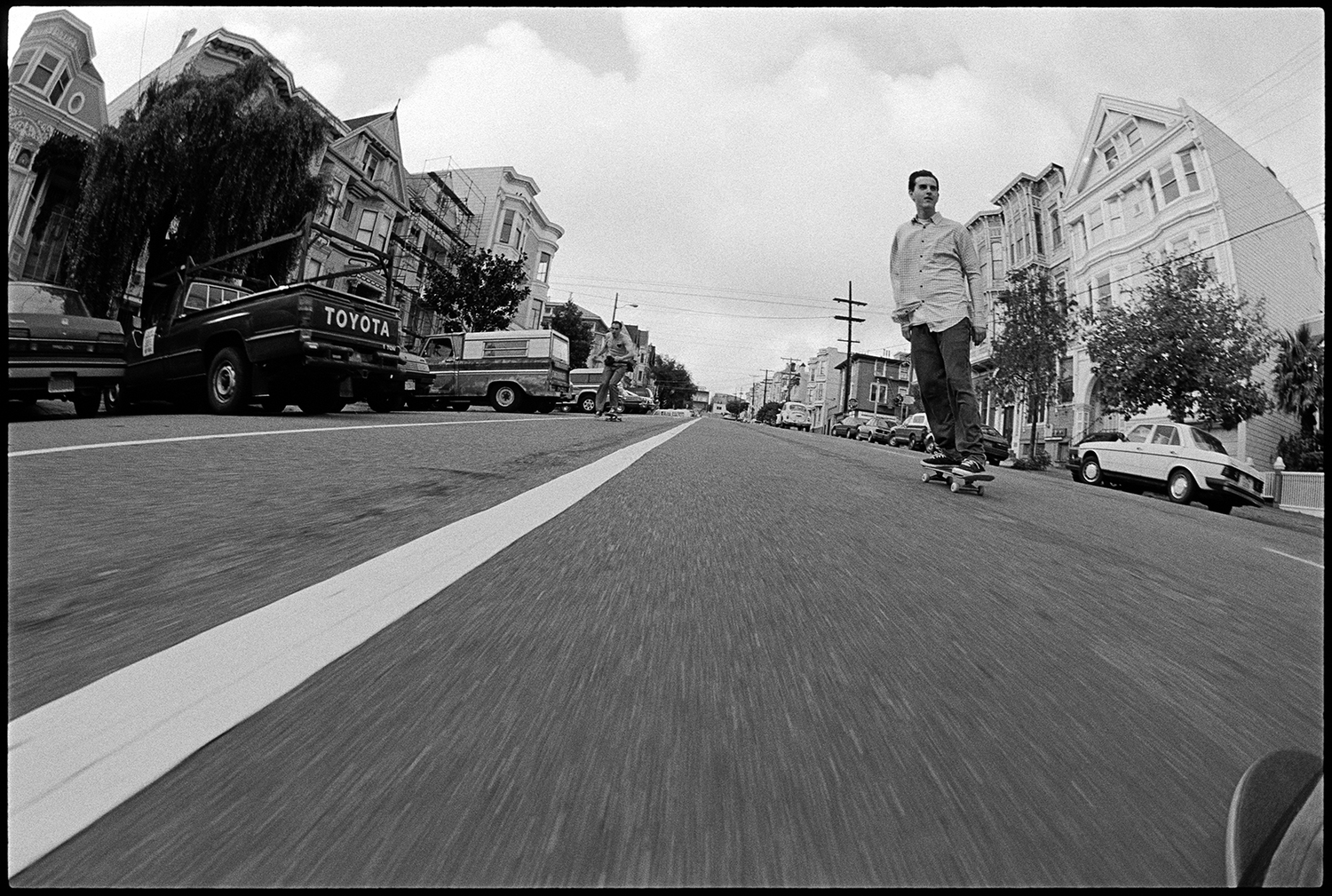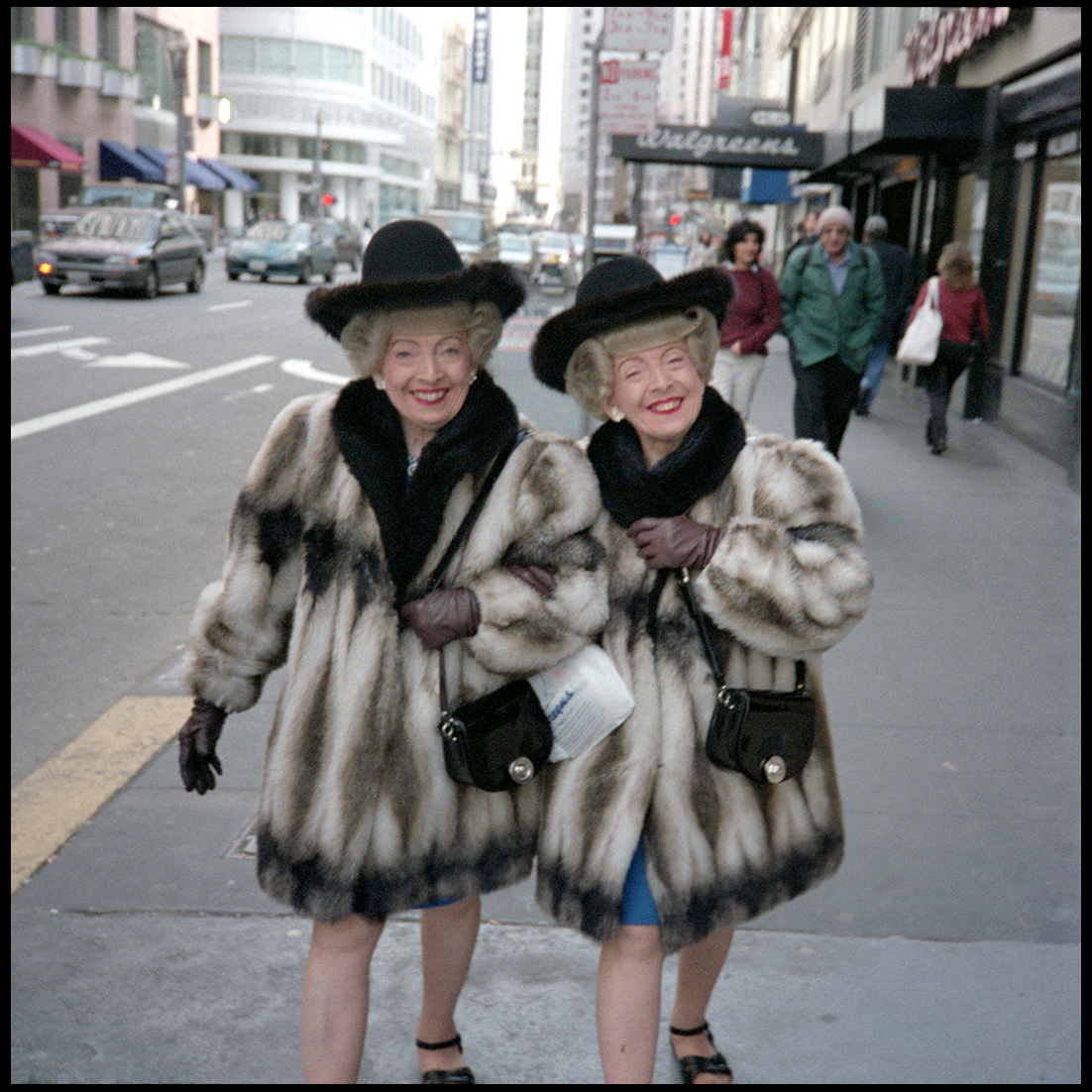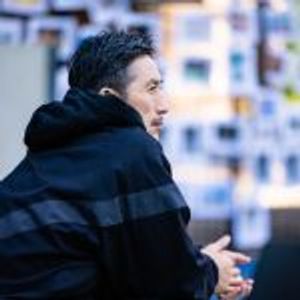Photography is a busy medium. This applies to skate photos, as various information such as sponsor logos, skate spots, and styles are in one shot. Dennis McGrath is more than capable of taking photos in this manner. On top of that, he does things only he can do. I’ve been editing a skateboard magazine for almost two decades. Over the years, I’ve worked on many spreads and issues which don’t feature skaters. I used a nude photo for the cover just once: it was Dennis McGrath’s photo.
San Francisco, CA 1995 ©Dennis McGrath
It all began with skate photography
Dennis McGrath started working as a professional photographer in the mid-90s. Skating was becoming enticing once again after losing its popularity for a while. It was the era of jumping out of the skateparks and onto the streets to turn various places into skate spots. Everything about skating was innovative.
After a year since he started going to an art school in San Francisco, the city of skating and steep hills, he shot the cover for Thrasher and the equally iconic Slap Magazine. He then took photos for an advertisement for Simple, a skate shoe brand. He got a 150-dollar check for his first paid job. Dennis McGrath continued to walk around to shoot on an Olympus XA, Canon 5D, and Leica M6, a rangefinder camera. Dennis McGrath has also provided photos for Japanese skate magazines.
The year was 2009 if I remember correctly. Instead of carrying his 5D, he used the Leica M6 to shoot documentary-style photos of adult film stars at a meet-and-greet for a magazine feature. He took them at an angle that made you feel like you could hear them breathing.
Hollywood Hills, CA 2006 ©Dennis McGrath
Recalling a memory involving Dennis McGrath
I can never forget one specific issue of Sb Skateboard Journal, where we featured his work. When I realized it, his whole editorial was documentation of adult film stars. There wasn’t a single photo of a skater doing tricks on their board. But on closer inspection, I realized the crew behind the cameras wore classic waffle-soled Vans and skate brand shirts. I thought, “Of course, these photos are related to skating. I mean, Dennis McGrath took them. He’s always been pushing his board and taking photos.” I felt convinced we had created an outstanding issue.
Perhaps we should’ve used a photo portraying a skate trick so people could tell it was a skate magazine when they spotted it at a bookstore. But doing the unexpected is what Dennis McGrath does. Plus, if we were going all the way, I wanted to pick a photo he liked too. The first photo he suggested was of a used condom; our magazine would’ve gone bust if we had chosen that as the cover. We finally settled on a nude portrait under blue skies. It was beautiful. It was perfect.
Later, one of our clients made a complaint: “You call this a skateboard magazine? It’s got nothing to do with it!” It was inevitable for them to think that. There’s a lot to skating, but what people want the most are magazines filled with the newest tricks. So, I couldn’t blame them. But I told them about all the photos Dennis McGrath had taken until that point and how the editorial was about him documenting the adult film world. I also told them we thought his photos were brilliant and that we should treat his work as something the skate scene birthed.
I wonder if Dennis McGrath would chuckle reading this.
©Dennis McGrath
The explosive skate magazine,
Big Brother, and Dennis McGrath
Street skateboarding was thriving in the 90s. Skating had always been free and creative, but it suddenly rose to prominence during that time. Skate magazine, Big Brother, played a significant role in that. Back then, there were three major skate media outlets. Thrasher was the mainstream one, while the progressive NorCal one was Slap. Transworld Skateboarding was the biggest.
And then, in came Big Brother, the magazine that focused on the niche parts of street skating that the other skate media didn’t pick up on. It was a delightfully naughty, vulgar, and bonkers skate magazine, which matched the zeitgeist perfectly. It’s not a stretch to say that the magazine revealed the spirit of those who were drawn to skateboarding. The magazine understood skaters that got slammed by concrete surfaces, chased around by security, and fined, even though they didn’t break the speed limit or anything. Despite such inconveniences, they came up with different skate tricks and reveled in them. Such people are just so wild and drunk on skating, in the best possible way. Big Brother taught me that.
Dennis McGrath tagged along with the former editor, the absolute riot that is Dave Carnie, and others to shoot for the magazine numerous times. He began working at Big Brother in 1998 as their in-house photographer and moved from San Francisco to Los Angeles three years later. Dennis McGrath developed a bromance there, and it mixed well with his photography style and personality.
©Dennis McGrath
Why I love Dennis McGrath
Big Brother did “dumb” things in a big way and took over a generation of skaters; they left behind a legacy. After they stopped printing the magazine, it became the basis for the legendary MTV show Jackass. Dennis McGrath had no regrets with Big Brother by the time it ended. He parted ways with them and started becoming friends with people working in the adult film industry through Hustler, which owned Big Brother. A few years later, he began shooting behind-the-scene footage in a documentary style on the set of adult films.
Dennis McGrath is a skater, a jokester, and a “brother,” but he’s a real photographer through and through. He understands the magic of rigorously shooting and printing photos on paper and making a book out of them. He’s currently working on a photo book titled Triple Ecstasy, a compilation of the photos he took of the adult film world in Los Angeles. I can’t wait to get my hands on it.
Dennis McGrath might get mad at me for saying this, but I feel like he’s the type of person who could easily miss the express train. He knows himself and knows what he wants to do. He had the skill set to become a professional skater if he had set his mind to it. If he had branched out to taking videos after Big Brother, he might’ve become a notorious reality show director. But the moment he held a camera in his youth, everything fell into place (or so I assume). Photography became his everything. As Dennis McGrath has said himself, when shooting, the skater and their style are crucial. The same goes for adult film stars, as their authentic selves and lifestyles make them photogenic. I love skater-photographers like him. These people can birth miracles because they take fun seriously. I’ll be looking forward to what awaits me in Triple Ecstasy.
Dennis McGrath
“I think I continue taking photos like this because it makes me happy” -Dennis McGrath. Born in New Jersey, Dennis McGrath moved to Houston at 13. After watching the iconic The Bones Brigade Video Show, he became inspired to skate at 16 years old. He enrolled in an art school in San Francisco in 1994 and dedicated himself to skate photography. In 1996, he shot the cover of Slap, one of San Francisco’s finest skate magazines. Since then, he has continued to work as a professional photographer.
Instagram:@dennis_mcgrath
Translation Lena-Grace Suda





